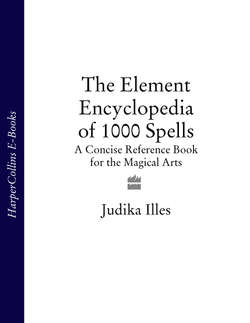Читать книгу The Element Encyclopedia of 1000 Spells: A Concise Reference Book for the Magical Arts - Judika Illes - Страница 82
Saints
ОглавлениеWhether fairies are spirits or humans may be subject for debate. Many spirits, from orishas, to those of ancient Greece and ancient Hawaii, may or may not be deified humans. The important orisha Chango, for instance, was once a king in Yorubaland. After death, he was deified and took his place among the orisha. That’s one version of his sacred story, anyway. The ancient Greeks demonstrated this process when Heracles and Psyche, both originally mortals, were permitted to shed their human energy and enter the Realm of the Divine.
Saints, however, are resolutely human—or at least they were when they were alive. Because the word “saint” has become so strongly associated with Roman Catholicism, it often comes as a surprise to realize that a concept of sainthood, albeit not an identical concept, exists among many other cultures, including the African Diaspora, Buddhist, Jewish, and Muslim traditions.
Roman Catholic saints are required to fulfill certain expectations before sainthood is officially conferred, and it can be a lengthy, bureaucratic process to prove their miraculous deeds. Other traditions use different criteria: sometimes the magic power (heka, baraka) contained by a person is so potent that it defies death, allowing others to continue to access it, for purposes of healing and magic. For many traditions, power of this magnitude is what confers sainthood. It is usually an informal process. There’s no official beatification or canonization: word of miracles simply gets around. Shrines spring up and crowds gather.
The behavior of these saints may or may not be exemplary. Many are described as devout, charitable, generous people, although others demonstrate what might be characterized as profligate tendencies. Regardless, a saint’s great power, baraka, is accessible to those in need.
Marie Laveau, the self-proclaimed Pope of Voodoo born in 1792, has ascended to this concept of sainthood. Thousands venture to her grave in New Orleans annually to beseech her for favors. In particular, Laveau has earned an excellent reputation for remedying legal issues, as she did during her life. Attempts to contact her are made by knocking three times on the front of her tomb or by drawing three x’s in red brick dust or chalk on the stone. Offerings and payments are left, most customarily salt water or seven dimes.
What is euphemistically called “folk Catholicism” has been the bane of the Roman Catholic Church for centuries. The desire to work with a saint, as with a spirit, or perhaps the desire of the saint or spirit to work with the person, is too strong to resist: magical practices creep in. Certain official Vatican-approved saints are also frequent participants in magic spells, particularly Saint Anthony, San Cipriano, Saint Martha the Dominator, Saint George, and John the Baptist. A saint’s magic powers may have little to do with their official hagiography: Saint Anthony, for instance, is invoked in almost as many love spells as Aphrodite. San Cipriano may or may not have been a reformed wizard in real life, but as far as magic spells are concerned, he’s returned to his old profession with gusto. When they are invoked for magic, these saints are treated like any other spirit: offerings and payment are made for miracles begged and received. Saints, like spirits, have favored numbers, colors, fragrances, and gifts.
